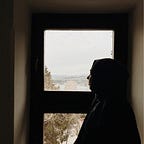An Ordinary Kinship Chart
Each kinship chart is precious and contains many stories from the family and history. However, what makes my kinship chart treasured is that it has no story. I opened my kinship chart with colossal excitement to see where I am coming from, and what kind of family I have, they migrated from where, and whether I am Armenian or not. There were so many questions in my head; nevertheless, when I opened it, all I saw was that neither my mother’s side nor my father’s side ever moved from Kayseri. Why are these people here? What makes Kayseri so attractive? The lack of a story in my kinship chart drives me to examine the reasons for that.
Firstly, 1846, the birth of my grandfather’s grandfather’s father (from my father’s side), is the last year I can reach. These people had lived in Yahyalı, Kayseri, for 141 years, until 1987 when my grandfather decided to move to Istanbul due to economic issues. Does Yahyalı worth living for more than a century? Why have these people never thought about sustaining their lives anywhere else? It is clear that their living conditions satisfied them, and there were no requirements that forced them to migrate. Since Kayseri has appropriate geographical patterns for agriculture and farming, I assume that my ancestors were not facing such obstacles as people living on the coast and border cities. I do not imply that geography entirely determines fate, but it is apparent that it has some effects. One of the fundamental facts that caused my ancestors to be stuck in Yahyalı is that my grandfather’s uncle Yahyalılı Hacı Hasan Efendi was an essential person for Muslim people in Kayseri and its neighboring cities. His father was one of the successors of tariqat named Nakşibendi. My grandfather’s uncle was arranging vaaz, and many people were coming to listen to him from many cities. (Ahmet Topaloğlu 1988:318)
What forced my grandfather to migrate to Istanbul in 1987, when my father was 10? My grandfather was one of the rare persons who studied at the university. He graduated from Erciyes University, Faculty of Islamic Sciences, then became a teacher, but his salary was insufficient to take care of his family. That is not a surprising incident since when we examine the teachers’ salary from 1946 to 2003 based on the Cumhuriyet gold they can buy, the 1980s’ salary is the worst with 1.5 goldens. In this data, 1965 is the best year with 28,6 golds. (Miraç SAĞLAM and Aycan ÇİÇEK SAĞLAM 2005) My grandfather chose to be a teacher in the worst years, which forced them to migrate to Istanbul with no money but with the hope of new opportunities. My father’s family was not the only people who dreamt of urban life. The urban population percentage in Turkey in the mid-1980s is a turning point: it had approximately increased 20 percent from the mid-1980s to 1990. (Karaburun, Demirci, and Suen 2009)
Finally, I want to examine the type of bonds my mother’s side has. My mother’s father does not have many recorded family members; only he and his father are recorded. This circumstance is the same in practice. My grandfather Mehmet neither had family members nor money and marrying my grandmother was an unreachable dream for him as she was the beautiful daughter of ağa. This story is remarkable regarding grasping the construction of kinship relations that are more than biology: they are selective interpretations of the shared human experience. There are unwritten marriage rules that are imposed by the society we live in. Such rules would constrain us as age, religion, social class, and ethnic identity. In my grandfather’s example, what firstly constrained them was primarily social class.
Nevertheless, thanks to his hard work and reliability, my grandmother was given to him. The kinship relations that were structured at the starting point of their marriage were aligned there, so my mother had grown up in a mother’s side-dominated family since they were rich, and had social status and power. Besides, it is interesting for women to be mostly recorded rather than men in the family. Civil law was established in 1926, the death year of my mother’s side’s oldest family member. I assume that as her husband died before 1926, he is not recorded in the population.
To sum up, my kinship chart does not include many migrations due to the social status of my father’s side, my father’s family had to migrate to Istanbul due to economic obstacles, and we can observe marriage constraints from the example of my grandfather.
